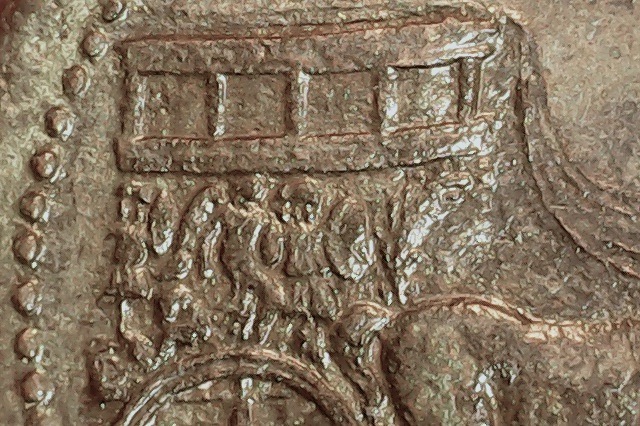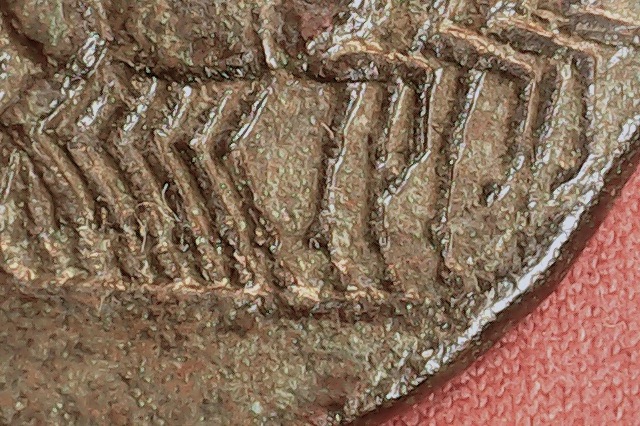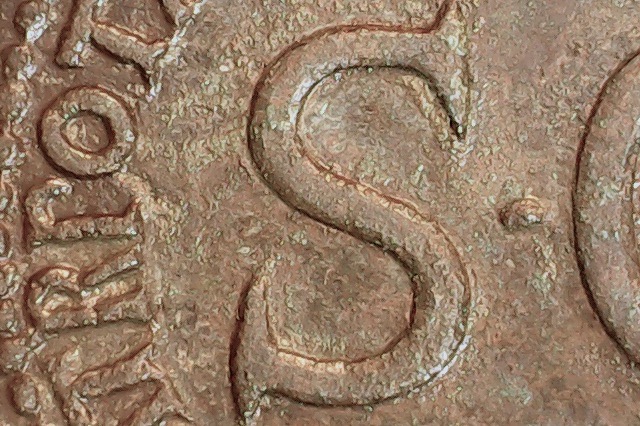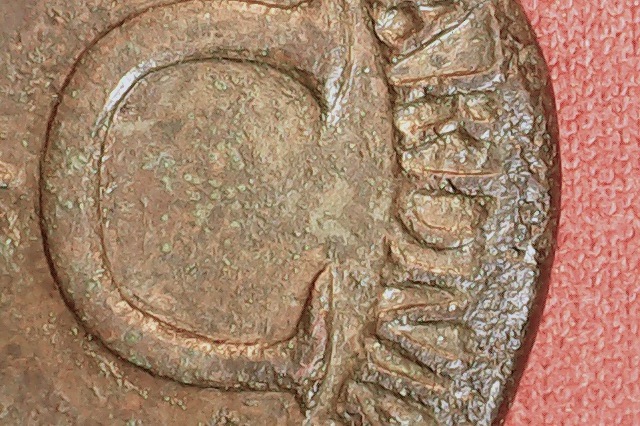Of course, the discount for smoothing and tooling depends upon how bad it is. Take a close look at this large (34-33 mm) and rare sestertius:

Will NGC affect the cost of ancient coins?
It already has. I'll prove it below.
This page is intended to help you learn something about how slabs affect the value of ancient coins. Pay attention!
Numismatic Guaranty Corporation (NGC) authenticates and grades coins. There are many collectors, especially those who have collected US coins, who pay close attention to the grade of a coin--they often pay more attention to the grade than to the coin itself. They value the coin according to the NGC evaluation, so NGC has an impact on prices. The previous value, determined by looking closely at the coin, is now affected by the numbers NGC assigns. That seems reasonable--they are experts and can help a potential buyer evaluate the quality of the coin. In US coins the surface of a good coin may show wear, but it is not supposed to be mechanically "brushed" or "smoothed" or, much worse, "tooled" to bring out missing details. A US coin with detractions like these might come home in a "body bag" as uncertifiable.
But, what about ancient coins? Many come out of the ground with encrustations or corrosion that require cleaning. Many get chemical cleaning and others mechanical cleaning (very carefully with tiny tools under magnification). It was very common a century ago to improve sestertii by scraping the fields to make them flatter (smoothing) and even by some cutting along outlines to make details shaper (tooling). If a coin offered in 1920 or 1995 was a sestertius but "smoothed," it probably was worth, and would have sold for, less than a very similar example that was not smoothed. Let's consider how much less.
Of course, the discount for smoothing and tooling depends upon how bad it is. Take a close look at this large (34-33 mm) and rare sestertius:

In 1995 is was sold in a major auction and described as "Some smoothing. Attractive dark green patina. Good very fine." Take a close look and decide about smoothing and tooling. Does it knock the price down a lot? A little?
Here are some closeup photos of the chariot side. (The color is not quite right and there is too much glare. The photo above is pretty good for color.)




NGC slabs give a coin a grade (which is for wear alone), and numbers for strike (on a scale 1 to 5) and surfaces (on a scale 1 to 5). Here is the whole coin again:

Now that you have seen it in closeup, what would you say about the surfaces? Tooled? Smoothed? Not? A little bit, but not bad? Pretty bad?
Well, this coin sold in 2021 as "Ch XF", "Strike 5/5", and "Surface 1/5, smoothing." The grade for wear has gone up, but the surfaces were judged to be bad, low on a scale of 1 to 5.
Personally, I don't think the surfaces are bad. I think they are about as nice as most very nice high-quality sestertii. I don't see any tooling (cutting into the metal). I do see, and expect, the fields have been rubbed smooth, but not completely smooth, as you can see.
How has the change from the 1995 "Some smoothing" to the 2021 "Surface 1/5, smoothing" by NGC affected the value/price of the coin?
Well, in 1995 is sold in a foreign currency (obviously unslabbed back then) for the equivalent of $4600 now (including fees). It was the equivalent of $3600 then (That currency has gone up versus the dollar). In 2021 that exact same coin sold slabbed for $1200, including fees. Remarkable!
Why did the price go down so very much?
I hypothesize that NGC has changed the way many buyers look at smoothing and tooling. NGC has taken what is a real no-no from US coins (altered surfaces) and made many buyers think it is also a real no-no in ancient coins, something that was not thought in 1995 or any earlier time. Whoever sold that coin should not have submitted it to NGC. They should have admitted "Some smoothing" but had they not submitted it they would not have gotten a "Surface 1/5, smoothing" designation. 1/5!! I think that killed the price.
The 1995 dealer said it was smoothed. The buyer knew it was smoothed. It is our reaction to smoothing that has changed. Smoothing sestertii was common and accepted as recently as 1995. Or, maybe it is mostly NGC's reaction. Maybe NGC could decide well-done smoothing makes the surface of a sestertius "3/5" or even "4/5" instead of "1/5". That's what they thought in the old days. Certainly the surface of that sestertius could be far worse than it is! Do ancient-coin collectors have the courage to retain old tried-and-true standards for very nice coins, or are they going to let US standards apply to ancient coins and greatly change the market?
Well, the market has already changed. Smoothing is already considered by many collectors to be terrible and to be avoided. That example (and there are others) proves it. Maybe some old collectors still have the courage to buy a nice coin at a super price, even at the risk that NGC would give it a bad number, or, worse, decline to certify it at all (for "Evidence of tooling thus ineligible for encapsulation.").
Experienced ancient-coin collectors know that there is pressure to slab ancient coins. That is a recent development. There is pressure to adopt the standards that apply to modern coins. However, I have been at it a long time and so have most of my collecting friends. If we buy a slabbed coin, we all crack it out of the slab as soon as it arrives. We all know that sestertii are often smoothed. Yes, it drops the price a bit, but should drop it only a bit. Ancient-coin collectors have known for centuries about smoothing and tooling and not worried too much about it (until now). Times are changing, but in that regard we can be conservative of old standards. Why not? You can get a great coin at a very good price!
Go to a page on grade and condition, a section of which has more about slabs.
Go to the main Table of Contents page of this educational site.